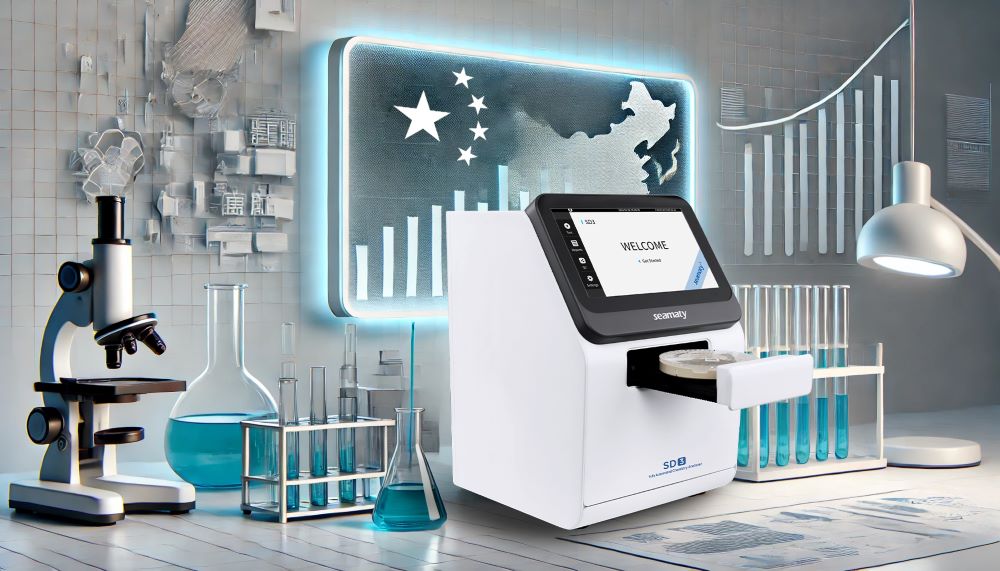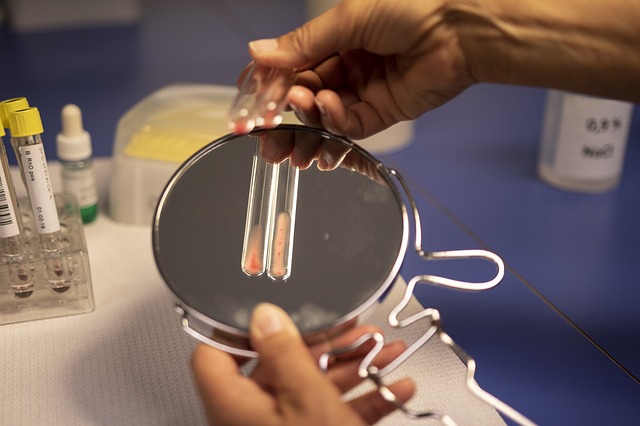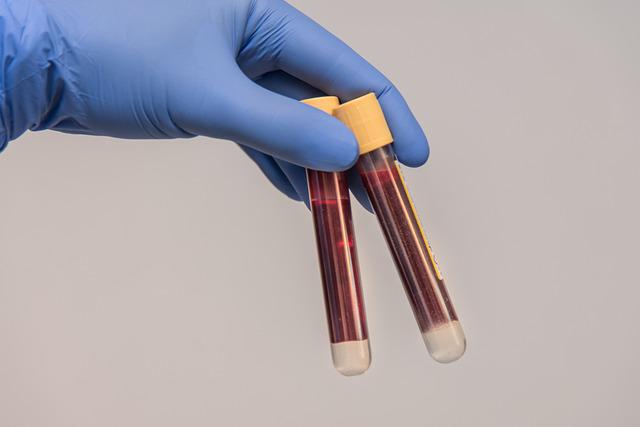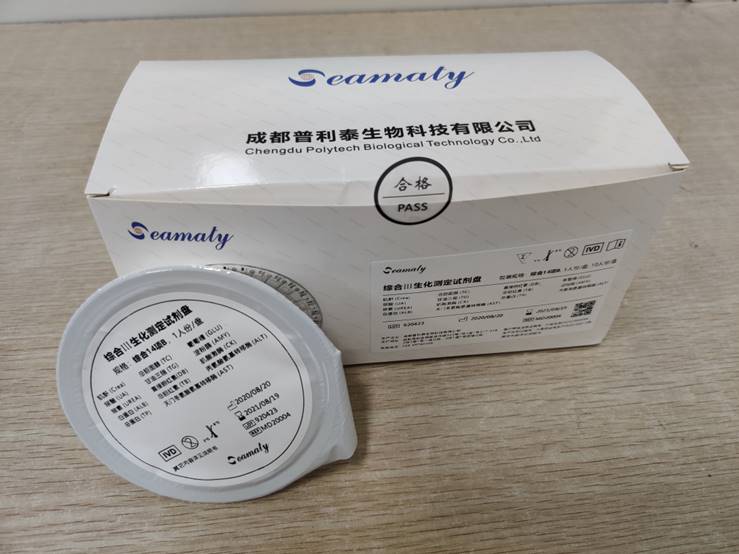release time:2024-11-14 11:58:19
In the global pursuit of enhanced healthcare diagnostic capabilities, the market for analytical instruments has become highly competitive. The quality and origin of these devices are now under the microscope. Made-in-China chemistry analyzers have risen to prominence in this landscape. According to recent data, between January and August 2024, China exported 57.59 million units of analytical instruments, showing a year-on-year increase of 3.07 million units, or 5.8%. The export value reached USD 161,573.1 million, with an increase of USD 0.876 million year-on-year, a growth rate of 0.4%. This growth trend reflects the strength of China's medical device industry.
Over the past years, continuous investment in R & D, a growing number of skilled professionals, and government support have driven the Chinese medical device industry forward. As a result, Chinese-made chemistry analyzers now meet international standards and possess unique features. In this blog, we'll explore the value of these analyzers by focusing on an outstanding Chinese brand-Seamaty.

Chinese-made chemistry analyzers offer an impressive balance between cost and performance. For healthcare facilities on tight budgets, this combination makes them an attractive choice. While many top international brands come with a high price tag, Chinese brands like Seamaty provide affordable yet high-quality solutions that meet international standards.
Affordability without Sacrifice: Seamaty, for instance, utilizes microfluidic technology to ensure test accuracy and reliability, allowing these analyzers to perform comparably to international brands in essential performance areas.
With substantial R&D investment, Chinese manufacturers have incorporated advanced technology into their analyzers. Seamaty’s dry chemistry method, for example, is paired with disposable reagent disks, simplifying operation and reducing contamination risks. The detection speed is also impressive: less than 12 minutes per test, which boosts the efficiency of clinical workflows, especially in high-demand settings like emergency departments and outpatient clinics.
Innovation at Work: This rapid turnaround time is a testament to the cutting-edge innovations coming from China’s medical device sector, positioning Chinese analyzers as both efficient and reliable.
A major strength of Chinese brands, like Seamaty, is their adaptability to meet the specific needs of international clients. These companies often work closely with overseas partners to offer customized features that cater to unique diagnostic requirements in different regions.
Designed for Versatility: Seamaty's analyzers, for example, feature a compact design and user-friendly three-step operation, making them ideal for varied settings, including hospital labs, private clinics, emergency vehicles, and even home healthcare.
The Chinese government has implemented policies to support the international expansion of medical devices, providing benefits such as export tax rebates and subsidies for overseas market development. These initiatives have helped Chinese companies, like Seamaty, lower their operational costs and enhance their competitive pricing on the global stage. Furthermore, regulatory support facilitates smoother certifications, making it easier for these products to enter foreign markets.
Cost and Compliance Advantage: For healthcare providers, this support means a lower overall cost and greater ease in sourcing certified, compliant products from Chinese manufacturers.
Chinese manufacturers generally excel in production and supply chain management, ensuring they can meet high-volume demands with timely delivery. Seamaty, for example, has established a global network, with subsidiaries and partnerships across Asia, Europe, and the Americas. This extensive network enables Seamaty to adjust production schedules based on regional demand, minimizing lead times and providing reliable supply.
Flexible Logistics: Seamaty’s global network means that providers across 100+ countries can rely on quick delivery and responsive service, ensuring continuous operation in clinical labs.
Case Study: Seamaty’s Impact on the Global Market
Seamaty has become a prominent name in Chinese medical device manufacturing by combining innovation with customer-centric service. Its chemistry analyzers, known for their affordability and reliable performance, have become essential tools in healthcare settings worldwide. With a presence in over 100 countries, Seamaty has demonstrated that Chinese-made analyzers can meet global standards without compromising on cost or quality.
In conclusion, Chinese-made chemistry analyzers, represented by companies like Seamaty, offer significant benefits to healthcare providers. With an ideal blend of affordability, cutting-edge technology, customization options, and dependable supply chain support, these analyzers are a smart choice for healthcare institutions looking to balance quality with cost-efficiency. For any healthcare facility considering an investment in diagnostic equipment, a made-in-China chemistry analyzer is certainly worth a closer look.
1. Top 10 Leading POCT Medical Device Manufacturers in China for 2024
2. 6 Leading In Vitro Diagnostics (IVD) Companies in China: A Comprehensive Overview
3. 3 Top Reasons to Choose Seamaty as Your Trusted POCT Analyzer Supplier
4. How to Successfully Enter the Chinese POCT Medical Device Market as an Overseas Distributor
5. 2024 IVD Market in China: A Comprehensive Analysis of 6 Key Segments

2022-07-13
Since the birth of the world's first automatic blood cell counter in 1953, hematology analyzers have grown along with Laboratory Medicine. With the development of basic medicine and testing technology, and the application of computer technology, the detection ability of hematology analyzers has been continuously improved.

2022-04-06
Lipid blood sample It is not uncommon for examiners to encounter lipidaemia in their daily work. And lipaemia interferes with many tests. For the accuracy of the test and the validity of the results, it is important to understand how lipaemia can interfere with the test? What can be done to reduce or even eliminate this interference?

2021-12-08
Dry chemistry analytical techniques are relative to wet chemistry techniques. Dry chemistry is the direct addition of a liquid test sample to a dry reagent produced specifically for a different project. The moisture of the sample under test is used as a solvent to cause a specific chemical reaction, which leads to a chemical analysis method. Dry chemistry is a class of analytical methods based on enzymatic methods. Dry chemistry can also be called solid phase chemistry. Dry chemistry uses reflectance photometry or differential electrode method as a measurement method.